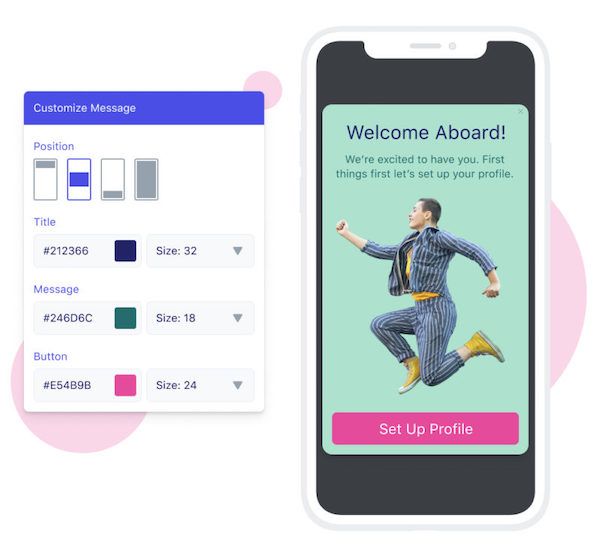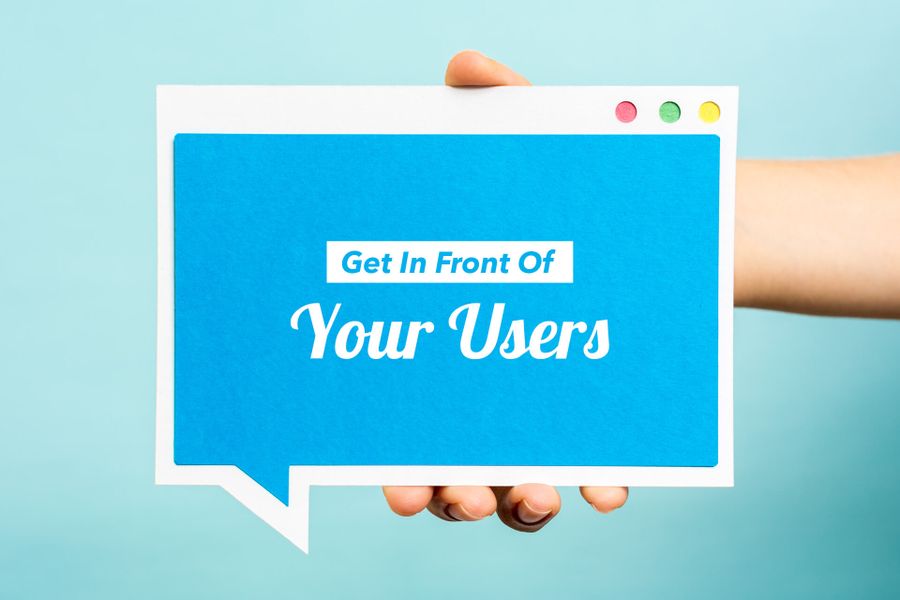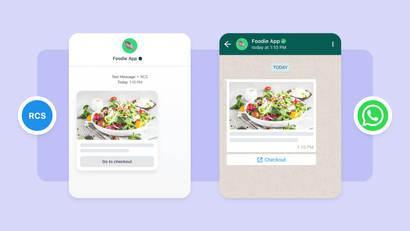Push notifications have proven to be one of the more effective ways marketers and developers can communicate with users. On average, over 5% of users that receive a push notification end up engaging with it.
On iOS and Web Platforms, users must opt-in to notifications to receive them. On Android, users are automatically opted-in, but are likely to opt-out the moment they receive a notification they don't want.
Opt-in rates also change depending on the user’s device.
- iOS Push Notification Initial Opt-In Rate: 43.9%
- Android Push Notification Initial Opt-In Rate: (N/A – Users are automatically opted in when they install an app)
- Web Push Notification Opt-In Rate: 10%
iOS and Web push notifications are based on a push opt-in model that doesn’t allow for apps or websites to send push notifications unless the user agrees beforehand.
On Android platforms, users are quick to disable notifications that they don't want. Android N (Android 7) further simplified this process by making the notification settings more prominent, to give users quick access to their preferences.
Long term opt-in rates across platforms tend to converge between iOS and Android platforms, but best practices on how you ask for notifications (on iOS and Web), and the quality of notifications you send, can meaningfully impact the total number of users who remain subscribed.
This is why before reaching out to your users, you need to be able to provide them with a valid reason to subscribe to your push notifications. At the same time, you also want to make sure the opt-in process is easy and doesn’t feel invasive or annoying. To help ease the pain of figuring out the best way to get people to opt-in, we’ve provided some proven ways you can increase opt-in rates so more users get your push notifications.
Create Value from Receiving Notifications

Prompting users to subscribe to notifications can be a tricky business since you only really get one shot at it. Once a user declines to subscribe to your messages within your app or website, the only other way they can opt-in would be to manually go into their settings which most users won’t end up doing. That’s why it’s imperative for your users to discover the value of receiving a push notification before asking them to opt-in.
One way your app or website can help guide users in discovering this value is through walking them through your application. For example, if your app hosts a variety of blogs from different contributors, you could hold off on prompting a user to subscribe until they’ve discovered a blog they really like. If the user decides to save that blog, you could then ask if they would like to be notified of future content. If they say yes to being notified, hit them with the prompt so that they can subscribe. This strategy is especially helpful for iOS app developers because iOS does not allow developers to change the default prompt message.
Time it Right

Another way you can increase opt-in rates is to specify when exactly you want to prompt your users to subscribe to push notifications. In many cases, asking a user to subscribe to push notifications within seconds of their first visit to your app or website can cause many people to hit “Block” on the prompt which can leave you without an audience.
Give users time to go through your website or application before asking them to opt-in to your messages. Allowing for a user to explore a bit before prompting them to opt-in lets them know what they might be getting into if they do subscribe. Services like a travel website that hosts last minute deals for travelers on a budget could wait until a person clicks into a deal before prompting them to subscribe to notifications.
OneSignal offers a variety of different ways websites can prompt users to opt-in to web push notifications. You can either opt for your typical Native Prompt or go with highly customizable Custom Links that can be changed at any time without changes to your site’s code.
Try Something Different

Unlike push notifications, In-App Messages can be sent to both your subscribed and unsubscribed mobile users and are triggered to open when a user opens the app. This creates a different opportunity for you to engage with your users outside of simply sending push notifications.
In-App Messages can also be customized to look even better than push notifications and are an effective tool in the hands of a savvy marketer. You could even create In-App Messages that guides users on how to resubscribe for push notifications if they had declined to opt-in before. In-App Messages could also be used to help pre-prompt users before showing the native prompt which can help increase opt-in rates for your mobile application.




